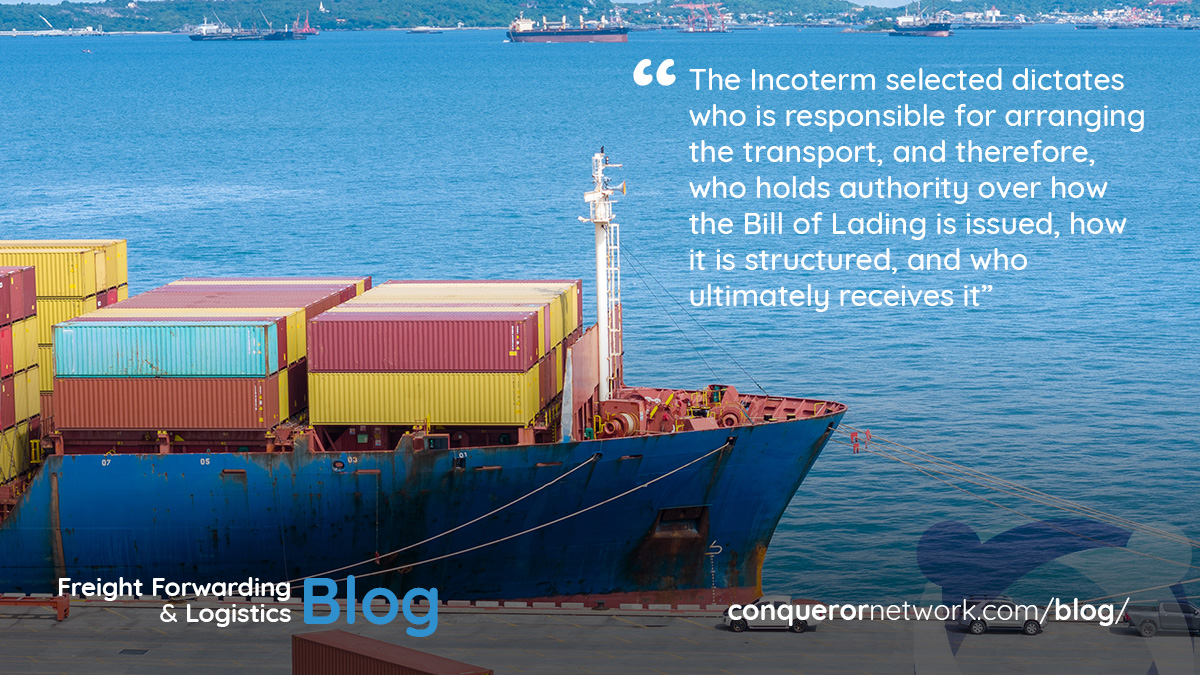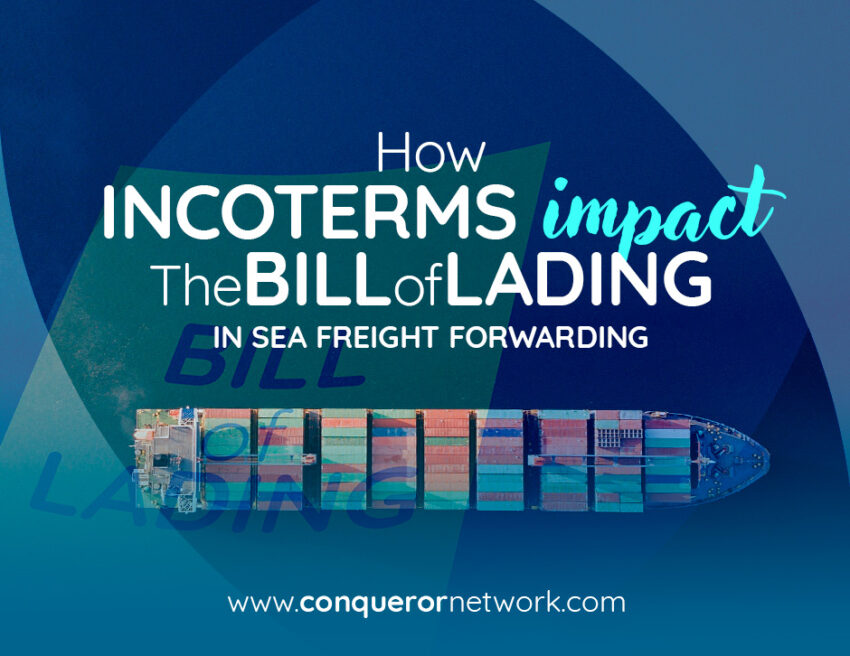In the world of sea freight forwarding, where smooth operations hinge on clear documentation and shared responsibilities, the Bill of Lading (B/L) and Incoterms serve as two of the most critical components. While the Bill of Lading acts as a contract of carriage, a receipt of goods, and a document of title, Incoterms define the responsibilities of buyers and sellers in global trade transactions. The interaction between these two elements can determine everything from who pays for freight charges to who gets the original Bill of Lading—and getting it wrong can lead to shipment delays, disputes, and even legal trouble.

For independent freight forwarders navigating complex global shipping routes, especially by sea, understanding how Incoterms influence the structure and function of the Bill of Lading is not just helpful—it’s essential.
The role of the bill of lading in sea freight forwarding
Before diving into the Incoterms side, let’s briefly revisit why the Bill of Lading is vital in sea freight forwarding. This document is issued by the carrier (or by the freight forwarder on behalf of the carrier) and serves three purposes: it acknowledges the receipt of goods, outlines the terms of shipment, and can be used to claim the goods at the destination.
In sea freight forwarding, the Bill of Lading also plays a critical legal role. It determines ownership, sets terms for freight liability, and is often required by customs authorities for import clearance. It can be negotiable (order B/L) or non-negotiable (straight B/L), and this distinction matters depending on the Incoterm used in the trade contract.
What are Incoterms and why do they matter?
Incoterms, short for International Commercial Terms, are standardized rules published by the International Chamber of Commerce (ICC) that clearly define the responsibilities of buyers and sellers during international trade. The most current version—Incoterms 2020—includes 11 terms that determine who pays for freight, who handles insurance, and who is responsible for risk during various stages of shipment.
For sea freight forwarding, Incoterms like FOB (Free On Board), CIF (Cost, Insurance and Freight), CFR (Cost and Freight), and EXW (Ex Works) are the most relevant. These terms assign different levels of responsibility to the seller and buyer, which directly affects the information that should be included on the Bill of Lading.
How Incoterms influence the Bill of Lading
Let’s explore a few common Incoterms used in sea freight and how they impact the B/L.
Under FOB (Free On Board), the seller is responsible for delivering goods to the port and getting them loaded onto the vessel. At that point, risk transfers to the buyer. In this scenario, the buyer typically controls the freight and might be the one instructing the freight forwarder to issue the Bill of Lading. That means the consignee listed on the B/L may be the buyer or a party acting on their behalf.
Contrast that with CIF (Cost, Insurance and Freight). Here, the seller arranges and pays for transportation and insurance to the destination port, but risk transfers once the goods are on board. Even though the seller arranges the shipment, they don’t retain risk during transit. This can complicate the B/L, especially in regard to who should receive the original copy and who can claim the goods at destination.
Then there’s EXW (Ex Works), where the seller does the least. The buyer is responsible for everything from pickup to final delivery. In this case, the buyer typically contracts the freight forwarder directly, and the B/L should reflect them as the shipper or consignee, depending on their role in the transaction.
As these examples show, the Incoterm selected dictates who is responsible for arranging the transport, and therefore, who holds authority over how the Bill of Lading is issued, how it’s structured, and who ultimately receives it.
Why getting it right matters
An incorrectly issued Bill of Lading can result in legal disputes, delays in delivery, or even loss of cargo control. For instance, if the B/L lists the wrong consignee or does not correspond with the responsibilities outlined in the Incoterm, customs authorities may deny release of cargo or demand additional documentation.
Moreover, in cases where the Bill of Lading serves as a document of title, such as with negotiable B/Ls, the party holding the original has the legal right to claim the goods. That’s why in transactions under CIF or CFR, where the seller arranges transport but does not bear the risk during sea freight, proper coordination is vital to ensure that the B/L matches the buyer’s needs and the payment terms (especially under Letters of Credit).
Sea freight forwarders need to have a deep understanding of these nuances to protect themselves and their clients from errors. Working with vague or outdated Incoterms—or misaligning them with the Bill of Lading—can cost a company time, money, and reputation.
Digital Bills of Lading and the future of Incoterms compliance
As technology reshapes logistics, electronic Bills of Lading (eB/Ls) are becoming more popular, especially in sea freight forwarding. Platforms like CargoX, TradeLens, and Bolero now allow parties to issue and transfer Bills of Lading electronically. This not only speeds up documentation but also reduces the risk of fraud, which is especially useful in cross-border trade where Incoterm disputes often arise.
However, going digital doesn’t eliminate the need for accuracy. Even with eB/Ls, the Incoterms must still align with the information listed in the document. Freight forwarders should ensure that the party responsible for transport under the selected Incoterm is the one reflected in the B/L, regardless of whether it’s digital or paper-based.
Final thoughts: A call to freight forwarders
In a globally connected and fast-moving industry like sea freight forwarding, mastering the relationship between Incoterms and the Bill of Lading is no longer optional. It’s a core competency.
Freight forwarders who understand how Incoterms like FOB, CIF, and EXW impact shipping documentation can better serve their clients, avoid costly mistakes, and navigate complex international regulations with confidence. As global trade continues to evolve and shift toward digital platforms, this understanding becomes even more critical.
At the end of the day, the Bill of Lading is more than just a piece of paper—it’s a reflection of the responsibilities, risks, and legal rights in a shipment. And Incoterms are the map that tells you where those responsibilities begin and end. When both are aligned, sea freight forwarding becomes not just efficient, but bulletproof.


